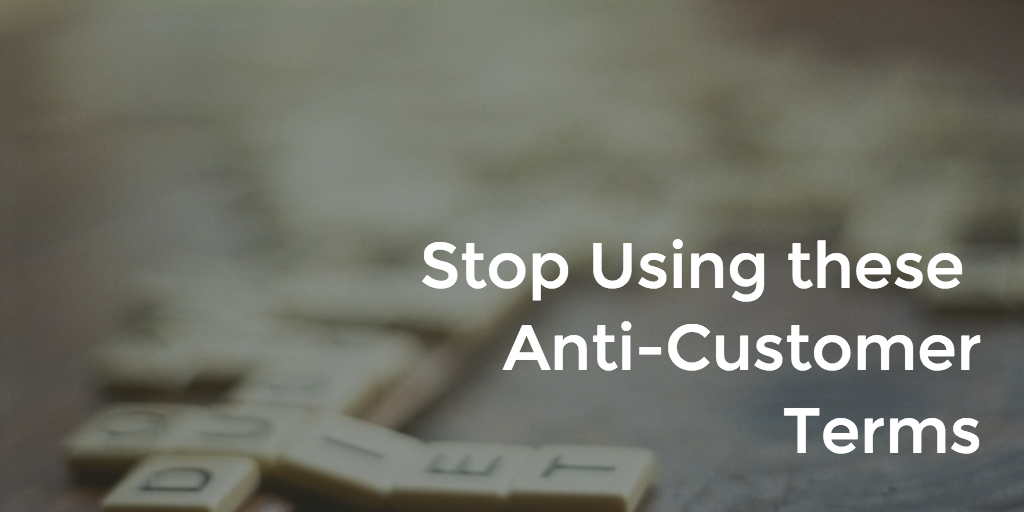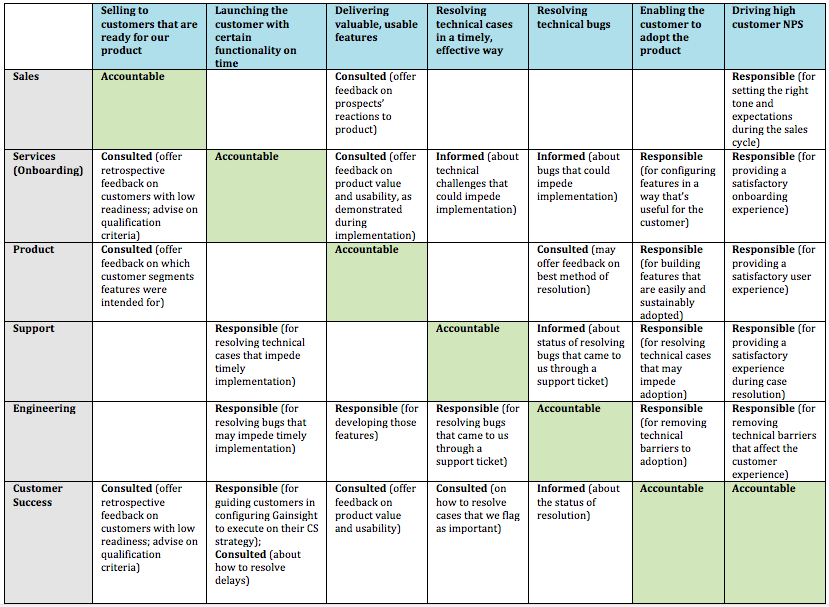 Ugh… isn’t dealing with customers that don’t get it and having to hold their hand along the way or check-in with them to make sure they’re okay, annoying? It’s so nice when you can hand ’em off to someone else, right?
Ugh… isn’t dealing with customers that don’t get it and having to hold their hand along the way or check-in with them to make sure they’re okay, annoying? It’s so nice when you can hand ’em off to someone else, right?
I hear that all the time from clients, on Clarity calls, and from companies I work with to bring Customer Success into their organizations.
Mostly I hear things like that from people in companies with high customer churn, super-low Free Trial conversion rates, and an overall negative NRR (Net Revenue Retention), meaning there’s little or no revenue expansion happening within the existing customer base.
The latter isn’t a surprise once I hear the way the company talks about their customers, but it is avoidable.
In order for Customer Success to really work, it has to be part of the DNA; brought in by executives and adopted in every area of the company.
But the things we say can derail that.
You can operationalize around your customer’s lifecycle, create a professional CSM org, implement a state-of-the-art CSM software solution… but if you talk about you customers in a negative way, you’re probably not going to achieve the level of success you’d like. It’s that simple.
Words are powerful and to a certain extent drive our actions. If we talk smack about our customers behind the scenes, some – or maybe all – of that will come out in how you interact with them, it will influence the tools you create for them, or otherwise, impact how you operationalize around their success.
So here are 5 terms to avoid in Customer Success… and no, this isn’t just semantics.
1. Don’t Deal with Customers
This is probably one of the most common phrases that we’re all guilty of using and yet I believe it to be one of the most damaging. When you say you have to “deal” with your customers, you’re putting your customers in the category of being a burden on you and not being an asset.
If they truly are a burden, maybe you need to redefine your Ideal Customer Profile.
“Dealing” with your customers is one of those terms that when we say it, our behavior really does start to follow suit.
A good sanity check on this term – and, in fact, all of the terms mention here – is would you say it to your customer? Think about it: “Next in line, I’ll deal with you in a minute.” Yikes!
No way you’d ever say that to their face, but when you say it behind the scenes a lot of things come up in your customer interactions; body language, the way you talk to the customer, and the processes you setup, etc. all may totally reflect having to “deal” with them.
2. No More Handoffs
Handoffs occur in all aspects of business, not just customer success, but over the years I’ve found this term to be damaging from a customer success standpoint and I’ve started removing it from my vocabulary.
Just like saying “dealing with the customer,” I’m guilty of talking about “nailing the handoffs” between sales and onboarding, onboarding and your customer success manager, etc.
But what I’ve seen is that the simple term “handoff” brings about this notion of taking the customer and throwing them over the wall to someone else to “deal with,” ultimately making them no longer your responsibility.
Handoffs reinforce the notion of “us vs. them” internally rather than encouraging cross-functional cooperation; handoffs reinforce silos. And silos aren’t good for anybody.
The best Customer Success-driven organizations don’t actually hand-off a customer from one person or department to another; rather, they have someone run point with the customer; someone who is accountable for the success of the customer (generally a CSM) and orchestrates, facilitates, manages, and monitors the customer’s interactions with other parts of the organization across their entire lifecycle.
I haven’t landed on the best term going forward, but “orchestrating touchpoints” has a better, more positive vibe than “nailing handoffs.”
And when considering how to operationalize around touch points, the RACI framework for Customer Success is a great model to use when moving beyond handoff-thinking.
3. Ban the Check-in Call
My friend and Gainsight Chief Customer Officer Dan Steinman (in)famously said “ban the check-in call” and he was really onto something.
Checking-in with a customer to see how they’re doing is the bane of a customer’s existence (“Hi, I’m just calling to see how things are going.”) and is ultimately the opposite of what we’re trying to do with operationalized Customer Success.
You should never reach out to a customer to ask how they’re doing or to just check in with them.
Rather, based on proactive data, date, or success-driven milestones you should reach out to proactively ensure that they are on the right track to achieve their desired outcome. You do this by gathering the appropriate customer insights and approaching them not to see how they’re doing but to tell them how they’re doing and to ensure their original Desired Outcome hasn’t changed.
For data-driven reactive events – for example changes to Success Vector (my much-improved customer health score alternative), poor NPS result, or if they’ve hit 90% o their allotted usage – you want to reach out to fix whatever problems there are or to take advantage of whatever opportunities there to expand their use or to get them back on track to achieving the desired outcome.
So this isn’t to say don’t contact your customer (if we’ve worked together you’d know I encourage contacting your customer more than you’re probably comfortable with), in fact, it’s the opposite… communicate frequently, just don’t call or email to check-in.
4. Stop the Hand-holding
When I talk about operationalizing Customer Success, the idea of “holding the customer’s hand” comes up, as if they are a child and that is such a negative way to look at the customer.
Your customers aren’t dumb; they’re busy or distracted and have other things going on. But they bought your product with the assumption that you’d help them achieve their Desired Outcome and it’s up to you to make that happen or they’ll stop being your customer.
It’s up to you to proactively ensure the customer is actively engaging your product in a meaningful way; a way that ensures they’re on the way to achieving their Desired Outcome.
If that means creating a wizard or developing a multi-step process external to the product to walk them through exactly what they need to do to get value from your product, then so be it.
If that means having weekly calls with your customer for the first 12 weeks, going on-site with the customer, doing work for them to enable your product to deliver value (integrations, data seeding, customizations, etc.), then that’s what has to be done.
If that’s not economically feasible, and that’s what the customer requires, you’re in trouble and need to rework things (like going through the aforementioned Ideal Customer Profile framework).
Bottom line, would you say to your customer “let me hold your hand as you work through this process with our product?” Probably not, so don’t say it behind the scenes because it will come out.
5. But they don’t get it!
This is perhaps one of the most infuriating things someone can say to me: “my customer just doesn’t get it.”
It’s not the customer that doesn’t get it… it’s you, my friend.
Just like I said before, customers are busy or distracted… not stupid.
And defaulting to this idea that your customers are stupid will start to permeate everything you do.
The reality is, you know more about your product, how it works, and how it functions than anybody else, which means you can read between the lines and fill in the gaps where there’s functional deficiency.
You know what should happen and what to expect so everything is easy for you, but your customers don’t yet and they struggle.
But not because they “don’t get it” but because you failed to create an experience that was appropriate for them.
So have some empathy for your customers and help them get value from your product as quickly as possible.
If you’re smart, you’ll take all of the things that your customer says when they’re frustrated and “don’t get it” and go back to the drawing board to figure how to re-work your overall user experience to ensure the customer can quickly get value from your product.
The smartest companies will do that at a level that doesn’t scale efficiently – things like talking to individual customers – to get intel so they can roll that into the products, services, and everything else they do so they can scale efficiently.
In fact, you should always have an ongoing customer development process, which one of the secret benefits of having an operationalized customer success organization and human CSMs; your CSM’s should be feeding back into product and every other customer-facing part of the organization.
CSMs are a treasure trove of customer intelligence.
Customer Success starts with the Things We Say!
Hopefully, you see that this isn’t just an exercise in semantics. I’m a really big “words matter” guy and I believe the things we say really do drive our actions.
Leaders should be extra sensitive to this. If your CEO uses any of these – or other customer-degrading – terms, you should try to get her to not say them. Lead by example.
Honestly, I’m trying to lead by example, but it’s not easy. I’m working to remove some of these deeply-ingrained terms from my own vocabulary; it’s a process… one you should start now, because it won’t happen overnight. But it should happen.
BTW, what are some other terms you think we should eliminate? Let me know in the comments.




